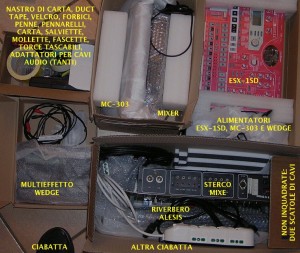Da un’intervista a DJ Stingray
“We’re in the 21st century, why would I want my music to sound like I made it 30 years ago, what sense does that make? I like using effects. Say I’ve got 32 inputs in my digital workstation, if I have enough RAM then I can put up to eight effects on every single channel. Each of these effects I can automate, I can manipulate their parameters down to micro units. It’s only limited by your imagination, the power there is phenomenal.”
“Don’t recreate Kraftwerk,” he continues. “That’s what the future sounded like 30 years ago. You wanna recreate that energy, recreate that same awe and fascination as when they first heard that music. You should be pushing for new sounds with each and every release.”
